5 major bonsai styling techniques, learn them quickly!
Last Update :2024.11.14
Article Catalog
Due to the different growth environments of the trees in nature, the postures of the trees are ever-changing, which is reflected in the more colorful forms of tree bonsai. From the perspective of the shape of tree bonsai, we summarize and merge similar or similar bonsai forms, and then classify and explain based on the changes in the trunks of the trees and the number of trees.
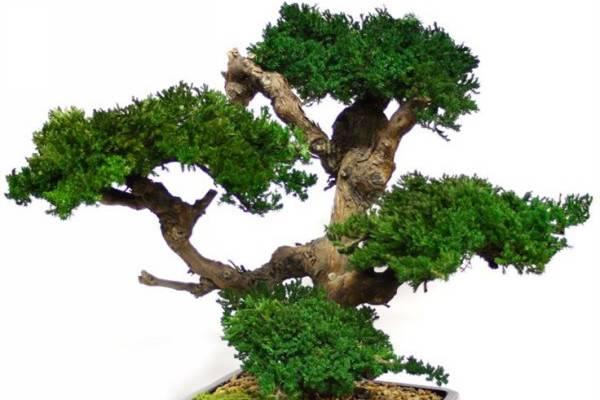
(1) Straight dry type
Bonsai trees have only one trunk, and the trunk The posture is basically upright or slightly curved, that is, the so-called straight and curved posture is called the straight dry posture. For straight-dry bonsai trees, the best expression of roots must be thick roots extending in all directions, making the trees look solemn, stable, and upright. The branches stretch out in all directions, with rich layers and powerful branches. The branches should sprout at about 1/3 or 2/3 of the height of the main trunk. There should not be too many branches and leaves to avoid blocking the main trunk. The main trunk should be exposed to show the erectness and vigor of the potted tree. The flower pot should be shallow, and the planting location depends on the shape of the tree. Pay attention to an asymmetrical balance between the tree and the pot. If the tree crown is an isosceles triangle, the planting position should be slightly toward the back; if the tree crown is slightly scalene, the planting position should be slightly toward the triangle's short side.
Straight-dry tree bonsai should be made into a towering "straight" picture work, and the branches should be short. Tree species suitable for expressing straight-stem works include black pine, five-needle pine, gold pine, metasequoia, ginkgo, elm, etc. Most of these materials are taken from forest farms and gardens, and some are also excavated from the mountains.
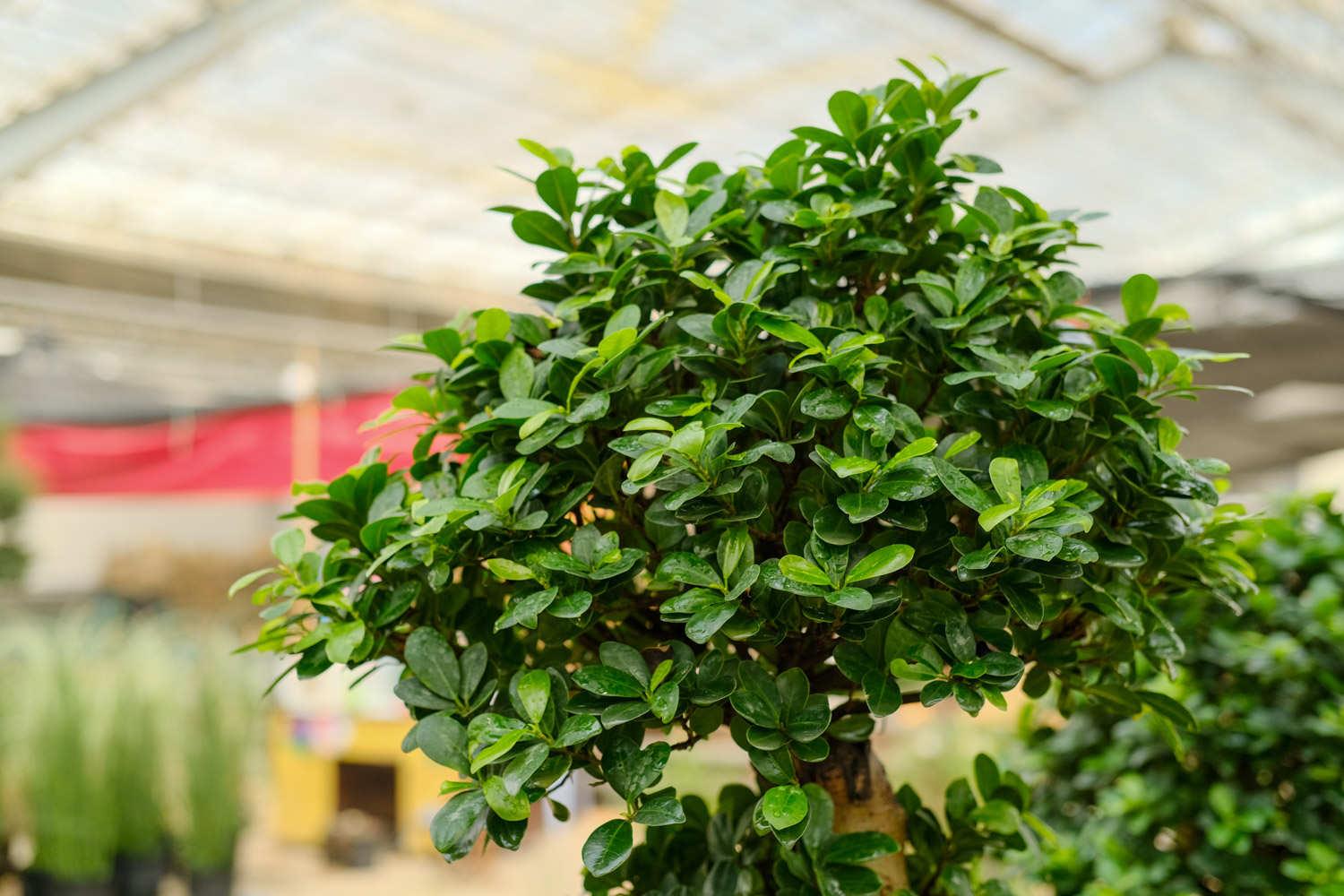
(2) Curved dry type
Curved-stem bonsai trees require a certain degree of curvature in the trunk, but not too many curvatures. One or two curvatures are enough. The music should avoid being too monotonous and repetitive, otherwise it will appear to be artificial. The essence of music lies in the changes in the main lines, which include firmness and softness, and a combination of firmness and softness. The lines are both smooth, graceful, and straight and strong.
Shancai Quqian material is unpredictable, vigorous and natural, which is very valuable. However, there are also unsatisfactory line changes, so be careful when choosing.
For artificially cultivated bent trunk materials, the trunk must be slightly tilted when planting, so that the roots on the other side can be cultivated into thick and strong roots and are half exposed on the soil surface, and the direction of the roots should be connected to the trunk. There is a smooth and coordinated feeling. This is the most important viewing part of the bent-stem tree bonsai and must be paid great attention to.
The part above the base of the trunk can be shortened by cutting, allowing the trunk to choose another direction of development. In the future, you can also use a combination of cutting and tying to cultivate the trunk until it meets the requirements of bonsai beauty.
Cypress is the most typical bent-stem bonsai material. Other species such as pine trees and some miscellaneous trees are also suitable for dry bonsai.
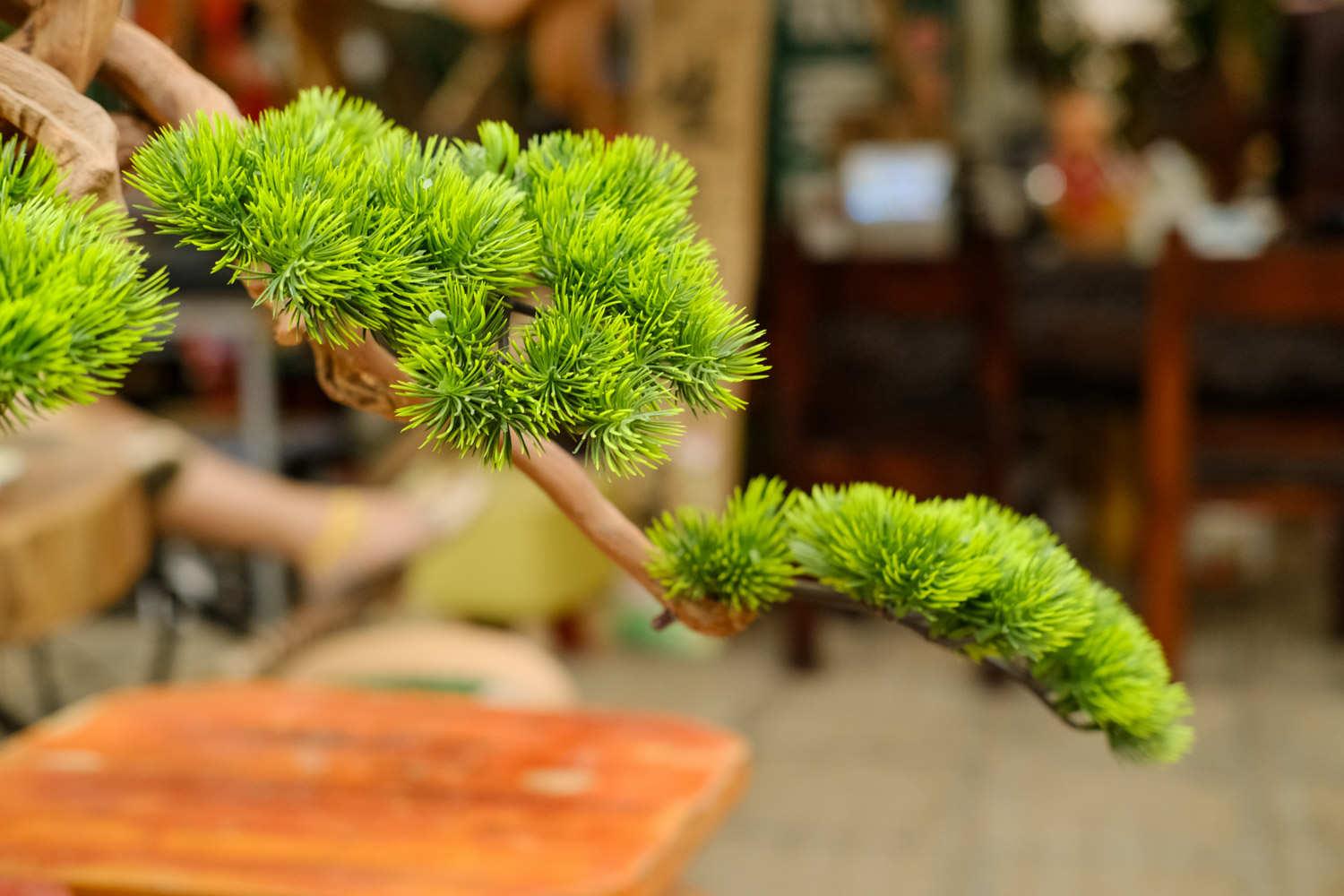
(3) Inclined dry type
The main trunks of trees in nature tilt, mostly caused by strong winds or mountain collapse, landslides and other factors. Therefore, the changes in the form of the tilt of the trunk of a tree are also very complex, but one thing is that its trunk line is not a straight line, but various deformations of an "S" shape. This tilting posture of the main trunk in nature is reflected in tree bonsai, which we call the inclined trunk style. The backbone of the slant-dry bonsai material must have various deformations of the "S" shape. If the main trunk leans to the right, there should be thick roots on the left side, and the trunk tips turn upward. This is like a slanted bonsai material that has been tilted for many years. If the main trunk is tilted and the main trunk lines are straight, it lacks charm and does not conform to the laws of nature. Because there is no such thing as a day with strong winds, and trees will always continue to grow upward.
The key point in making slant-stem tree bonsai is how to keep the tree in balance without losing its center of gravity. The methods include: playing the role of thick roots in opposite directions, playing the role of branches in opposite directions, and large branches tilting in the same direction as the main trunk to give people a feeling of support.
In order to strengthen the tilt of the potted tree and make the composition active, it is advisable to choose a round shallow pot, a square shallow pot or a half-height round pot, so that the tilted trunk or branches can extend beyond the pot.
Coniferous trees and some miscellaneous trees are suitable as materials for slanting dry bonsai.
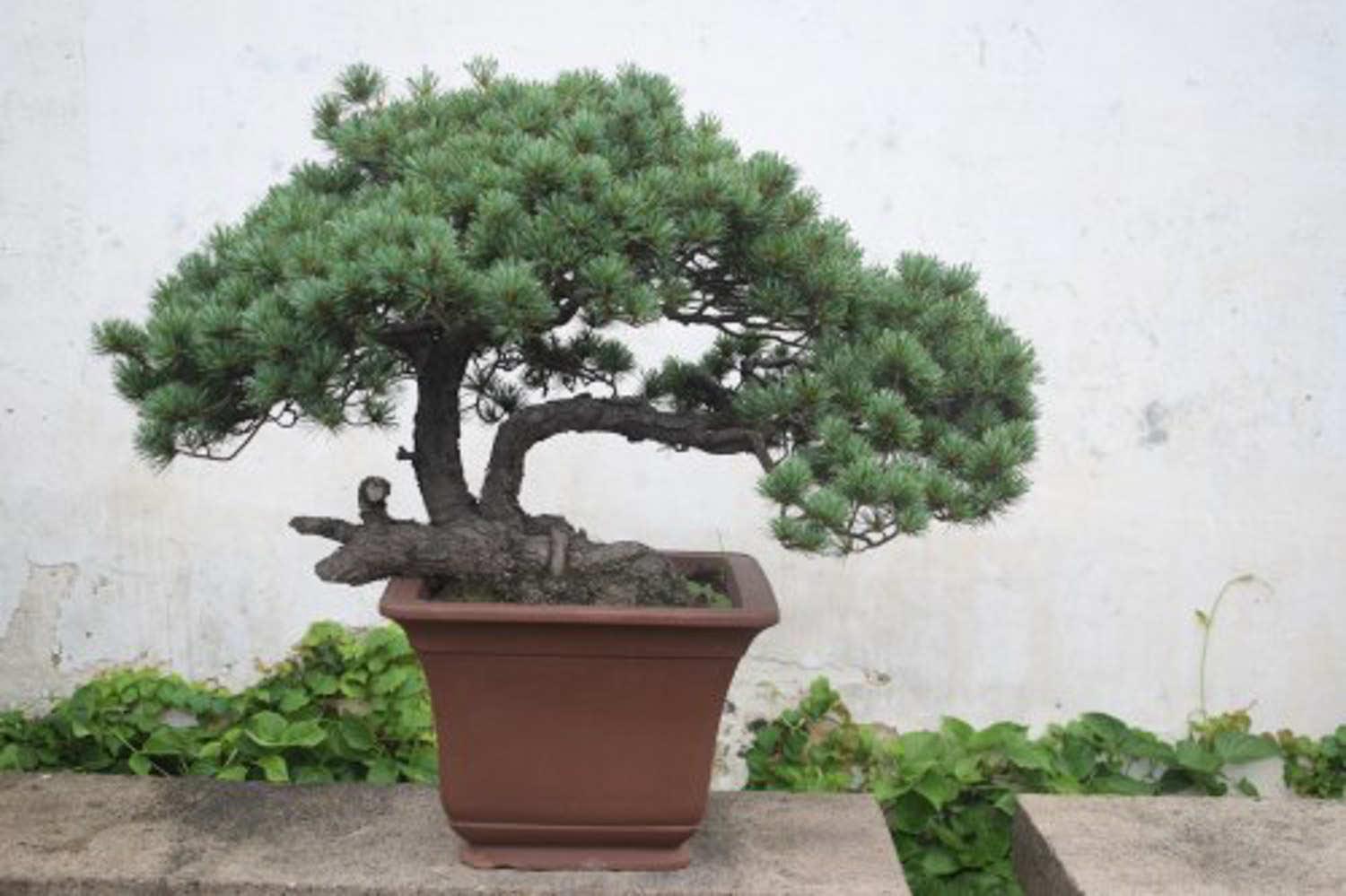
(4) Cliff style
On the cliffs in nature, it is common for some trees to grow in various postures, which are thrilling but still lush. Trees with this posture are reflected in bonsai and are collectively called cliff style.
Cliff-type generally includes semi-suspended type, full-suspended type and upside-down type.
Semi-suspended: The entire bonsai tree extends beyond the pot, but the tree body is not lower than the pot surface. It may be that the main trunk protrudes horizontally, or it may be that the main trunk is short and the first branch is thicker and longer, thus taking advantage of the situation.
Full suspension: The entire bonsai tree extends beyond the pot, and extends downward in a pouring manner with the branches extending horizontally.
Upside-down style: The entire bonsai tree extends beyond the pot, with the exposed trunk hanging vertically upside down and the branches still extending horizontally.
The key to making cliff-style bonsai is material selection, which requires a certain degree of curvature at the base of the trunk so that the trunk or large branches can move horizontally or droop. Although cliff-style bonsai is popular, it must be considered according to the material conditions, and the modeling principle of "adapting measures to material conditions" must be followed.
Cliff-style bonsai were often planted in flower pots to enhance the momentum of trees falling from high places. . Nowadays, half-height square pots or round pots are often used for planting, and a few taller shelves are used to create a cliff-like atmosphere during exhibition layout. Its advantage is that it can improve the cultivation and management of trees caused by the too deep high trunk tube; in terms of viewing, it can integrate the landscape, pot and stand into a trinity, and display it vividly, so that the picture is transparent, coordinated and vivid.
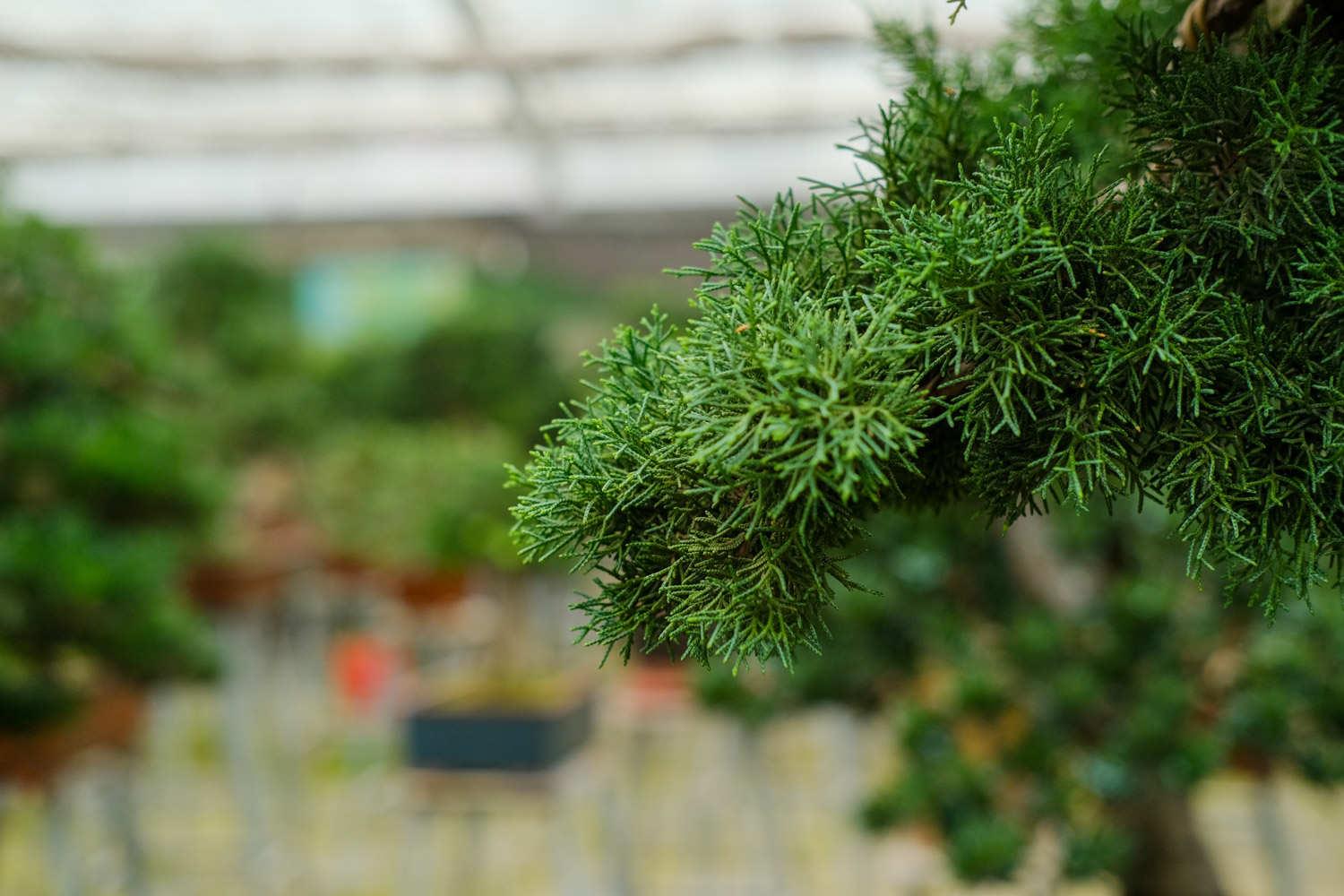
(5) Double dry type
Double-stem tree bonsai appears in the form of two trees combined together, embodying the artistic beauty of humility, coordination, response, appropriate density, and virtuality and reality between the two trees, thus showing that the work has both form and spirit and blends the scene. realm.
The following points must be paid attention to when making double-dry bonsai.
When selecting two trees, there must be priority. The main tree should be taller and the secondary tree should be shorter.
The posture of the main tree is the main one, and the posture changes of the trunk of the secondary tree should be roughly similar or close to the posture of the trunk of the main tree to form a certain tacit understanding. If the postures of the trunks of the two trees are completely different, such as the same tune, it will be difficult to create a harmonious beauty and should be avoided.
When planting two trees, they must be planted in front and back, not parallel. Who is in front and who is behind depends on the specific situation. When planting, the bases of the main trunks of the two trees should be close to each other, and the roots of the trees should be basically in the same direction, and should not be separated from each other. The angle between the extension directions of the trunks of the two trees should not be too large. Generally, an angle within 45° is ideal. If it is too large, the trunks of the two trees may lose their response and care for each other.
Branch processing The selection and adjustment of branches in the double-stem type are more complicated. The two trees must be treated as a unified whole in order to achieve overall balance and stability, coordination between virtual and real, and orderly competition.
The large lower branches of the two trees should extend outward respectively, and the thicker branches should be cut off between the two trunks to prevent the thick branches from crossing the main trunk. The branches between the two trunks should be filled in by the branches on the front and back sides to avoid going straight, which is the most natural.
In addition, the branches of the main tree should be high and the branches of the secondary trees should be slightly lower to prevent the branches of the main tree from affecting the growth of the secondary trees.
Double-trunk planting can also be two different tree species, but the best combination is still one tree species.
The double-stem style is a combination of two trees planted together. It can also be combined into a double-stem style, collectively called the double-stem style. Because from a modeling perspective, their main trunk processing and branch processing are the same. A double stem may have been originally one body but was later split into two parts due to external force. The height, thickness, curvature and changes of the two main trunks are all in line with the performance requirements of bonsai art. The dried relics are also made of nature, with slight modifications to remove decay. The divine branch is indispensable, but it is artificial. The two water lines are wide and grow on the outside of the trunk, which is the most ideal. The crown of the tree is closely combined with two crowns, and its momentum is unified with the two stems. The whole tree is suitable for movement and stillness, has a compact structure, and has the beauty of stability, calmness, unity and harmony.

- END -
Golden osmanthus cultivation methods and precautions
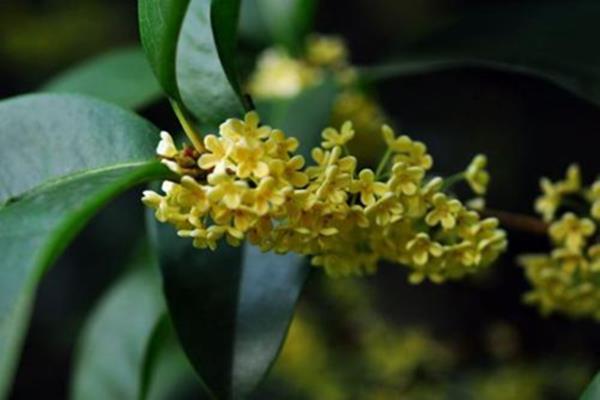
Be careful to use soil with relatively good water permeability. You can use rotten...
Methods and precautions for growing longevity flowers in winter. Can they be kept outside in winter?

When caring for longevity flowers in winter, you need to keep them warm because th...